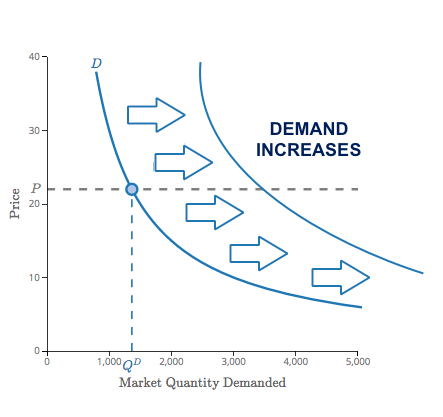ECON: Factors That Affect Demand
Good morning/evening/night readers!
Shall we continue our Economics course? Last post I wrote about the Law of Demand. So we saw the difference between Demand and Quantity Demanded. Also, we demonstrate the fundamental, which is the inverse correlation between prices and quantity demanded: when the price rises, the quantity demanded will decrease. Our two tools to ensure this was an example and the graph, let's do a recap!
The example was the analysis of the TV price variation in a certain neighborhood where people are willing to pay $400 on a TV, on average. Then, we considered some situations, and notice what happened with the Quantity Demanded.
This is the graph! Note that as the x-axis increases, the y-axis decreases. From an economic perspective, we notice that while the price rises, the quantity demanded drops.

Graphic from https://www.econgraphs.org/
After this review, we are going to exam the factors that can possibly affect the demand. First of all, some notes: we are only interested in investigating the price of a good (microeconomics) and there are some exceptions (next post will be about this).
Factors that can influence the demand
1) Price
We have already discussed this on the TV example in the previous post; however, it is pivotal. If the price rises, the quantity demanded will decrease, and if the price decreases, the quantity demanded will rises. The inverse correlation is because the consumer is almost always keener on lower prices.⬇️ price, ⬆️ demand 2) Income If the income of the consumers rises, the demand will rise, because they will be more willing. Although this seems to be a recurring event, it is not as there are exceptions that we are going to discuss in the next post.
⬆️ income, ⬆️ demand
3) Population
As the population grows, the demand too. It is intuitive! If there are more people, there are more who wants to buy in the long term.
⬆️ population, ⬆️ demand
4) Preference
Consumer preference is volatile; it depends on advertising, publicity, and even quality. This is hard to predict! Nevertheless, as the preference for some specific good rises, the demand too.
⬆️ consumer preference, ⬆️ demand
5) Competitive goods
Competitive good is a product that can almost totally replace another. Thus, if the price of competitive goods increases, the demand of the others will increase.
⬆️ price of competitive goods, ⬆️ demand
6) Complementary good
Complementary good is a product that benefits others. So as the price of complementary decreases, it will incentive people to buy more and the demand will increase.
⬇️ price of complementary goods, ⬆️ demand
7) Expectation of future prices
If consumers expect that the future will increase. They will likely buy now, so the current demand will rises.
⬆️ the expectation of future prices, ⬆️ current demand
8) Credit
As credits are more facilitated (people can borrow easier), it will increase the purchasing power and, consequently, demand.
⬆️ credit, ⬆️ demand There are many others, but these are the most significant ones. Let's examine how these factors influence graphics.

When demand increases, the graph goes to the right, because the quantity demanded rises. Note that the x-axis advances.

When demand decreases, the graphic goes to the left, because the quantity demand declines. Note that the x-axis drops.
Therefore, we discussed the factors that can affect the demand such as price, income, population, consumer preference, credit, the expectation of future prices, and complementary/competitive goods. Additionally, how can they modify the graphics.
Thank you for reading this article so far! Feel free to contact me either in the section 'Contact us' or on Instagram if you have any doubts. Do not forget to subscribe to our blog and follow us on Instagram (@meep.blog). 'See you' next weeks!
Luigi

Comments